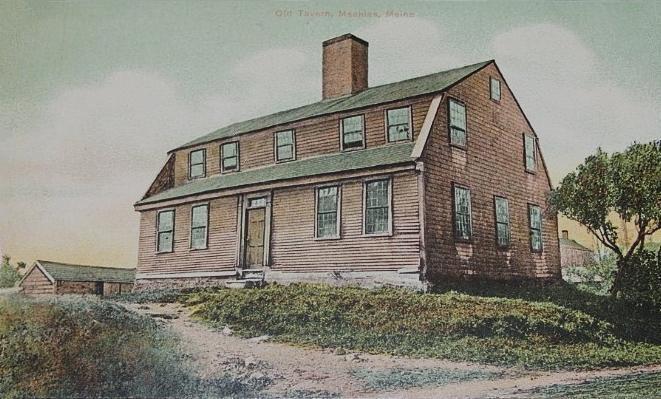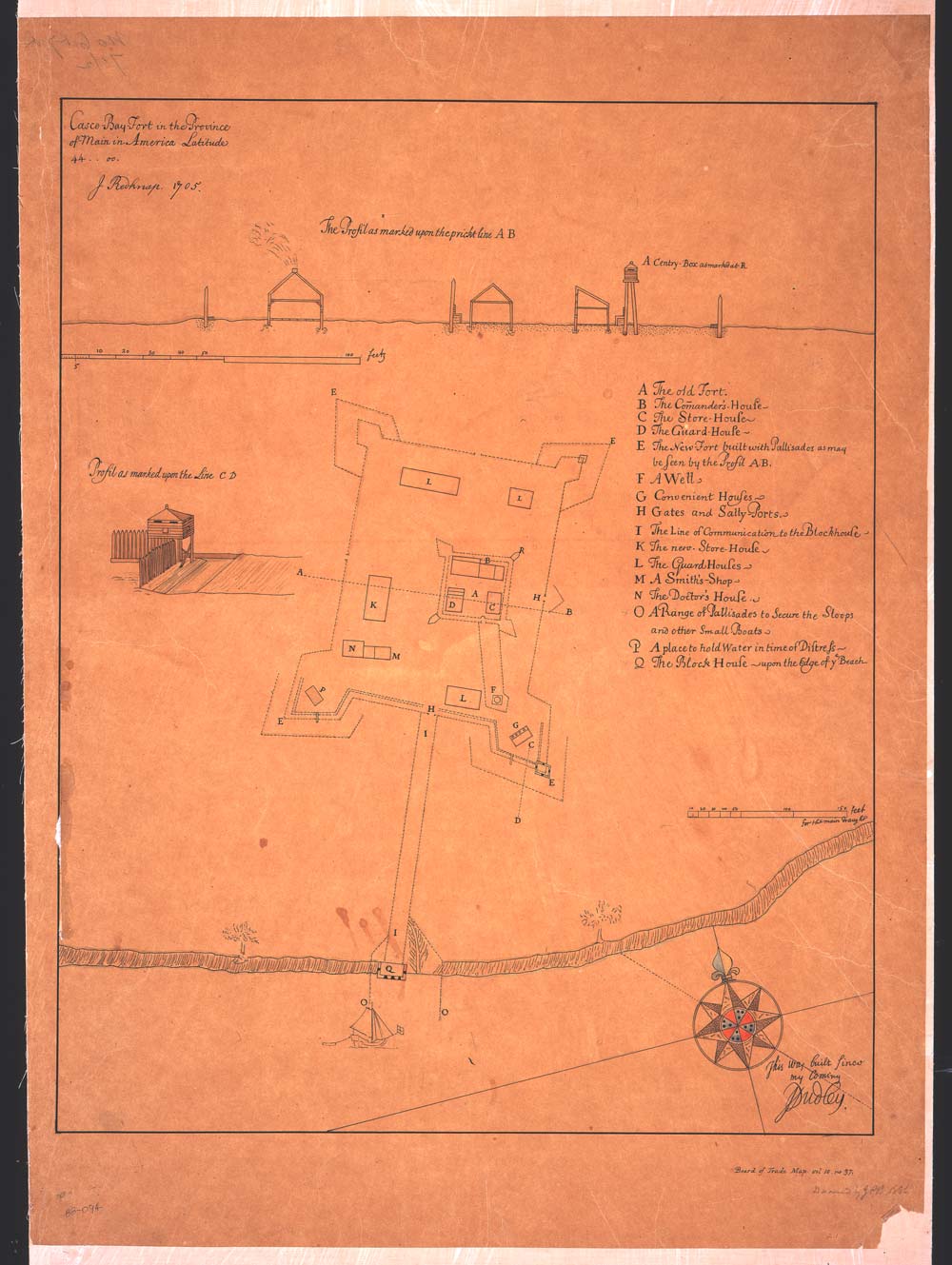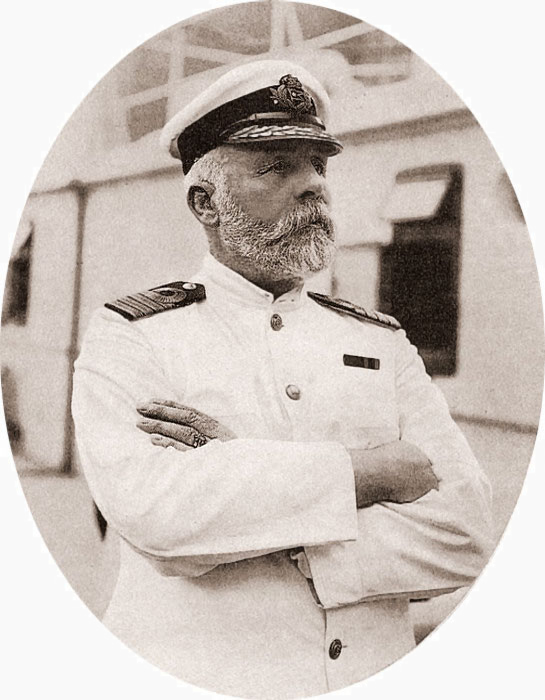|
Gilman Road
Gilman Road is a prominent street in Yarmouth, Maine, United States. It runs for about from Lafayette Street ( State Route 88) in the northwest to the Ellis C. Snodgrass Memorial Bridge at White's Cove in the southeast. At the bridge, which connects the Yarmouth mainland to Cousins Island, the road becomes Cousins Road. One of the first streets laid out in the town,''Ancient North Yarmouth and Yarmouth, Maine 1636-1936: A History'', William Hutchinson Rowe (1937) it was later named for Tristram Gilman, the fourth pastor of the Meetinghouse under the Ledge, which stood near the road's intersection with today's Lafayette Street between 1729 and 1836, prior to Yarmouth's secession from North Yarmouth. (He was also the original 1771 occupant of what is now known as the Gilman Manse, which is located at 463 Lafayette Street.)''Images of America: Yarmouth'', Hall, Alan M., Arcadia (2002) Yarmouth's West Side Trail crosses Gilman Road a short distance east of the Pioneer Cemete ... [...More Info...] [...Related Items...] OR: [Wikipedia] [Google] [Baidu] |
Tristram Gilman
Tristram Gilman (November 24, 1735 – April 1, 1809) was an American Congregational minister who served as the fourth pastor of the "Old Ledge" meetinghouse in what was then North Yarmouth, Massachusetts (now Yarmouth, Maine), for forty years. Gilman Road, adjacent to where the church formerly stood, is now named for him. Early life Gilman was born in Exeter, Province of New Hampshire, on November 24, 1735. The son of Reverend Nicholas Gilman (who died in 1748, when Tristram was twelve years old), and Mary Thing,''Ancient North Yarmouth and Yarmouth, Maine 1636-1936: A History'', William Hutchinson Rowe (1937) he graduated from Harvard College in 1757. His younger brother, Joseph (1738–1806), was a judge in Marietta, Ohio. Joseph's son and Tristram's nephew, Benjamin Ives Gilman (1766–1833), was a shipbuilder and an extensive landowner in Ohio. Their cousin was Nicholas Gilman (1755–1814), a Founding Father of the United States. Ministry Gilman moved to Maine in the ... [...More Info...] [...Related Items...] OR: [Wikipedia] [Google] [Baidu] |
Garrison (architecture)
A garrison is an architectural style of house, typically two stories with the second story overhanging in the front. The traditional ornamentation is four carved drops (pineapple, strawberry or acorn shape) below the overhang. Garrisons usually have an exterior chimney at the end. Older versions have casement windows with small panes of glass, while later versions have double-hung windows. The second-story windows often are smaller than those on the first floor. Dormers often break through the cornice line. Historically the term ''garrison'' means: # a group of soldiers; # a defensive structure; # the location of a group of soldiers is assigned such as garrison house or garrison town. "The term ''garrison'' refers to the military or defensive character of a house" but not as heavily built as a blockhouse. "Garrisons, or fortified houses, were built in almost all New England towns and they were particularly common in the frontier towns of Maine and New Hampshire...Like an o ... [...More Info...] [...Related Items...] OR: [Wikipedia] [Google] [Baidu] |
Harlan Prince
Harlan Page Prince (June 9, 1837 – March 5, 1899) was an American sea captain in the 19th century. He began going to sea at the age of fifteen in a career that lasted for forty years. He commanded eight ships during his career. Upon retirement, he became a member of the Maine House of Representatives. Life and career Prince was born to Captain Reuben Prince and Deborah Drinkwater, their youngest son. He was educated in the public schools of North Yarmouth, Maine, then at North Yarmouth Academy. At the age of fifteen, he began to go to sea. Ship-building at Yarmouth harbor was in full swing, and he became interested in becoming captain of one of the ships. His ambition came to fruition, and he commanded the following ships: * ''Aeronaut'' * ''Emma'' * ''Agenora'' * ''Ester'' * ''B. Webster'' * ''Onaway'' * ''Carrie Heckle'' * ''Wm. G. Davis'' Upon his father's death in 1870, Harlan inherited the property now known as the Captain Reuben Prince House at 210 Gilman Road in t ... [...More Info...] [...Related Items...] OR: [Wikipedia] [Google] [Baidu] |
John Calvin Stevens
John Calvin Stevens (October 8, 1855 – January 25, 1940) was an American architect who worked in the Shingle Style, in which he was a major innovator, and the Colonial Revival style. He designed more than 1,000 buildings in the state of Maine. Early life Stevens was the son of Maria Wingate and Leander Stevens, a cabinet maker and builder of fancy carriages. He was born in Boston, Massachusetts, but when he was two, his family moved to Portland, Maine. Stevens wanted to study architecture at the Massachusetts Institute of Technology, but lacked the money to attend. Instead, he apprenticed in the Portland office of architect Francis H. Fassett, who in 1880 made him a junior partner to open the firm's new Boston office. Another architect working in the same building was William Ralph Emerson, whose historicist aesthetic in the Queen Anne Style had a profound effect on Stevens. He married Martha Louise Waldron in 1877, and they had four children. Stevens opened his own offi ... [...More Info...] [...Related Items...] OR: [Wikipedia] [Google] [Baidu] |
Machias, Maine
Machias is a town in and the county seat of Washington County in Down East Maine, United States. As of the 2020 census, the town population was 2,060. It is home to the University of Maine at Machias and Machias Valley Airport, a small public airport owned by the town. The word ''Machias'' roughly translates in Passamaquoddy as "bad little falls", a reference to the Machias River. Machias is best known as the site of the first naval battle of the American Revolution. History The English first became acquainted with the area in 1633, when Richard Vines established a trading post for the Plymouth Company at what is now Machiasport. Raid on Machias (1633) A fierce contest was at this time going on between France and England. Charles de la Tour, the French commander of Acadia, made a descent upon it from his seat at Port Royal, Nova Scotia, killing two of its six defenders, and carrying the others away with their merchandise. No persistent attempt was again made to hold this ... [...More Info...] [...Related Items...] OR: [Wikipedia] [Google] [Baidu] |
Falmouth, Maine
Falmouth is a New England town, town in Cumberland County, Maine, United States. The population was 12,444 at the 2020 United States Census, 2020 census. It is part of the Portland, Maine, Portland–South Portland, Maine, South Portland–Biddeford, Maine Portland-South Portland-Biddeford metropolitan area, metropolitan statistical area. This northern suburb of Portland borders Casco Bay and offers one of the largest anchorages in Maine. The town is home to three private golf clubs and the Portland Yacht Club. History Native Americans Native Americans followed receding glaciers into Maine around 11,000 Common Era, BCE. At the time of European contact in the sixteenth century, people speaking a western dialect of the Abenaki, Wabanaki language inhabited present-day Falmouth. Captain John Smith (explorer), John Smith observed a semi-autonomous Band society, band known as the Aucocisco living in Casco Bay. English explorer Christopher Levett met with the Aucocisco Sac ... [...More Info...] [...Related Items...] OR: [Wikipedia] [Google] [Baidu] |
Portland, Maine
Portland is the largest city in the U.S. state of Maine and the seat of Cumberland County. Portland's population was 68,408 in April 2020. The Greater Portland metropolitan area is home to over half a million people, the 104th-largest metropolitan area in the United States. Portland's economy relies mostly on the service sector and tourism. The Old Port is known for its nightlife and 19th-century architecture. Marine industry plays an important role in the city's economy, with an active waterfront that supports fishing and commercial shipping. The Port of Portland is the second-largest tonnage seaport in New England. The city seal depicts a phoenix rising from ashes, a reference to recovery from four devastating fires. Portland was named after the English Isle of Portland, Dorset. In turn, the city of Portland, Oregon was named after Portland, Maine. The word ''Portland'' is derived from the Old English word ''Portlanda'', which means "land surrounding a harbor". The Greater ... [...More Info...] [...Related Items...] OR: [Wikipedia] [Google] [Baidu] |
Yarmouth Harbor
Yarmouth Marina is a natural harbor and estuary of Casco Bay, and is located adjacent to the town of Yarmouth, Maine, United States. It is situated on the Royal River, around southeast of the town center, in an area known as Main_Street_(Yarmouth,_Maine)#Lower_Falls, Lower Falls. Today it functions solely as a marina. Historically a harbor, due to its proximity to the Atlantic Ocean, into which the Royal River flows via Casco Bay, less than a mile away, ships were built in the harbor mainly between 1818 and the 1870s, at which point demand declined dramatically. Shipbuilding Maritime activities were important from the beginning of the town's third settlement, after several clashes with the local Native Americans, around 1715. Almost three hundred vessels were launched by Yarmouth's shipyards in the century between 1790 and 1890.''Images of America: Yarmouth'', Hall, Alan M., Arcadia (2002) Lumber from inland areas was shipped out from the harbor. Vessels were being built ... [...More Info...] [...Related Items...] OR: [Wikipedia] [Google] [Baidu] |
Schooner
A schooner () is a type of sailing vessel defined by its rig: fore-and-aft rigged on all of two or more masts and, in the case of a two-masted schooner, the foremast generally being shorter than the mainmast. A common variant, the topsail schooner also has a square topsail on the foremast, to which may be added a topgallant. Differing definitions leave uncertain whether the addition of a fore course would make such a vessel a brigantine. Many schooners are gaff-rigged, but other examples include Bermuda rig and the staysail schooner. The origins of schooner rigged vessels is obscure, but there is good evidence of them from the early 17th century in paintings by Dutch marine artists. The name "schooner" first appeared in eastern North America in the early 1700s. The name may be related to a Scots word meaning to skip over water, or to skip stones. The schooner rig was used in vessels with a wide range of purposes. On a fast hull, good ability to windward was useful for priv ... [...More Info...] [...Related Items...] OR: [Wikipedia] [Google] [Baidu] |
Sea Captain
A sea captain, ship's captain, captain, master, or shipmaster, is a high-grade licensed mariner who holds ultimate command and responsibility of a merchant vessel.Aragon and Messner, 2001, p.3. The captain is responsible for the safe and efficient operation of the ship, including its seaworthiness, safety and security, cargo operations, navigation, crew management, and legal compliance, and for the persons and cargo on board. Duties and functions The captain ensures that the ship complies with local and international laws and complies also with company and flag state policies. The captain is ultimately responsible, under the law, for aspects of operation such as the safe navigation of the ship,Aragon and Messner, 2001, p.4. its cleanliness and seaworthiness,Aragon and Messner, 2001, p.5. safe handling of all cargo,Aragon and Messner, 2001, p.7. management of all personnel,Aragon and Messner, 2001, p.7-11. inventory of ship's cash and stores,Aragon and Messner, 2001, p.11-12. an ... [...More Info...] [...Related Items...] OR: [Wikipedia] [Google] [Baidu] |
Captain Joseph Drinkwater House
The Captain Joseph Drinkwater House is an historic home at 146 Gilman Road in Yarmouth, Maine, United States. Built in 1844, an architectural survey undertaken in 2018 found it had "important ties to Yarmouth history", for it was the home of the seafaring Drinkwater family for over a century.Architectural Survey Yarmouth, ME (Phase One, September, 2018), p. 26 - Yarmouth's town website Joseph Drinkwater built the house, which stands at the intersection of |
Princes Point Road
Princes Point Road is a prominent street in Yarmouth, Maine, United States. It runs for about from Lafayette Street ( State Route 88) in the north to Sunset Point Road in the south. It was one of the first streets laid out in the town''Ancient North Yarmouth and Yarmouth, Maine 1636-1936: A History'', William Hutchinson Rowe (1937) when it was centered around the Meetinghouse under the Ledge in the 18th century. Gilman Road, another of the early roads in the area, intersects Princes Point Road near its northern end. In the late 19th century, trolleycars of the short-lived Portland and Yarmouth Electric Railway passed Princes Point Road en route to Yarmouth's village center after the town's population had moved away from the Broad Cove area. Yarmouth's West Side Trail crosses Princes Point Road between Gilman Road and Morton Road. The road is named for the Paul Prince (1720–1809), who served for Massachusetts in the American Revolutionary War. Notable buildings a ... [...More Info...] [...Related Items...] OR: [Wikipedia] [Google] [Baidu] |

%2C_Scotland_(York_County%2C_Maine).jpg)





